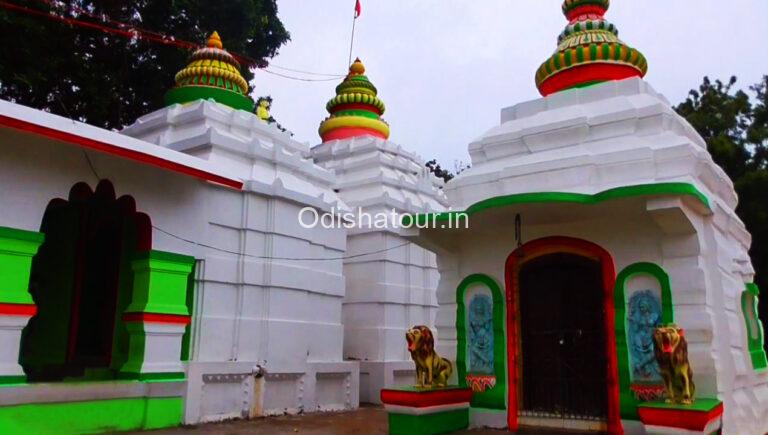Raibania Fort is located near the Odisha-West Bengal border, 65 km from Balasore city and 20 km from Jaleswar. This fort complex was built during the rule of Eastern Ganga ruler Narasingha Deva I. Raibania Fort’s unique architecture, constructed from laterite blocks and featuring distinctive gateways distinguishes it as an exceptional example of military design in eastern India. Forts were used as the main centre of state defence at that time. Raibania Fort, considered the biggest military citadel of the medieval period in Eastern India, has negligible sources regarding its origin. This Raibania fort needs the attention of history, whose past is shrouded in mystery in the present.
The Raibania Fort, once larger than the Barabati Fort in Cuttack, likely predates the Imperial Ganga dynasty in terms of architectural sophistication, urban planning, and overall settlement design compared to other forts established by the Gangas. During the era of the Imperial Gangas, it likely served as a key frontier fort, guarding against foreign invasions. The forts are located at a distance from the sea at the mouth of the Subarnarekha. The Raibania Fort stands as a significant historical landmark in the context of Odisha’s military strength during the Ganga dynasty’s rule. This fort’s strategic location played a pivotal role in safeguarding against external threats and provided a secure space for military training and operations. Surrounded by natural defences like the Subarnarekha River and dense bamboo forests, the Raibania Fort emerged as a formidable defensive stronghold.
History of Raibania Fort
According to a legend, Raibania was the capital of King Virata of Mahabharata, where the Pandavas hid themselves during the last year of their exile in incognito in the forest. The presiding deity of King Virata was Kichakeshwari Devi, or Garh Chandi or Jaychandi, who was worshipped in the Raibania Fort. It has been mentioned that an unknown later king of Mayurbhanj forcibly took away the deity and consecrated it in a temple at Khiching. If the construction of the Khiching Temple dates back to the 10th/11th century, the antiquity of Raibania Fort can be stated much earlier. However, this cannot be accepted in the absence of substantial archaeological evidence.
The fort built during the age of Mahabharata is unlikely to survive after such a long period. The Fort dimensions are the Eastern wall 4950 feet, the Northern wall 4950 feet, the North-eastern wall 2640 feet, the South-western wall 4650 feet, and the Southern wall 2640 feet. The walls of the fort consist of layers of stone gradually tapering to a point and covered entirely with earth rammed closely; the breadth at the base is 112 feet, and the height is 50 feet. However, the actual height of the Rabania wall is only 30-35 feet. Raibania fort is a tourist attraction in Basore District. source
Other Services
Destination Attractions, Destination Facilities, Transportation, Accessibility, How to Reach
Rabania opening Time
Best Time to visit
Nearest Bus Stop
Nearest Railway Station
Nearest Airport
Best Places To Visit in Balasore
-
 Emami Jagannath Temple, Balasore
Emami Jagannath Temple, Balasore -
 Talasari–Udaypur Beach, Balasore
Talasari–Udaypur Beach, Balasore -
 Chandipur Sea Beach, Balasore
Chandipur Sea Beach, Balasore -
 Chandaneswar Temple, Jaleswar
Chandaneswar Temple, Jaleswar -
 Bhudhara Chandi Temple, Nilagiri
Bhudhara Chandi Temple, Nilagiri -
 Panchalingeswar Temple, Nilagiri
Panchalingeswar Temple, Nilagiri -
 Kuldiha Wildlife Sanctuary
Kuldiha Wildlife Sanctuary -
 Balramgadi Radha Krishna Temple
Balramgadi Radha Krishna Temple -
 Balramgodi Sea Beach
Balramgodi Sea Beach -
 Bichitrapur Mangrove Sanctuary
Bichitrapur Mangrove Sanctuary -
 Nilagiri Jagannath Temple & Palace
Nilagiri Jagannath Temple & Palace -
 Bhusandeswar Temple, Bhogarai
Bhusandeswar Temple, Bhogarai -
 Blue lake
Blue lake
Popular Tourist Attractions Places near Raibania
-
 Bhusandeswar Temple, Bhogarai
Bhusandeswar Temple, Bhogarai -
 Khumkut Dam, Nilagiri, Balasore
Khumkut Dam, Nilagiri, Balasore -
 Sindhua Dam & Picnic Spot, Soro, Balasore
Sindhua Dam & Picnic Spot, Soro, Balasore -
 Bisheshwar Mahadev Temple
Bisheshwar Mahadev Temple -
 Maninageswar Shiva Temple
Maninageswar Shiva Temple -
 Dagara Sea Beach, Balasore
Dagara Sea Beach, Balasore -
 Laxmannath Mahashay Palace
Laxmannath Mahashay Palace -
 Kasafal Sea Beach, Balasore
Kasafal Sea Beach, Balasore -
 Langaleswar Haraparbati Temple
Langaleswar Haraparbati Temple -
 Sunya Mandap, Kupari
Sunya Mandap, Kupari -
 Khirachora Gopinath temple, Remuna
Khirachora Gopinath temple, Remuna -
 Sarisua waterfall
Sarisua waterfall



















